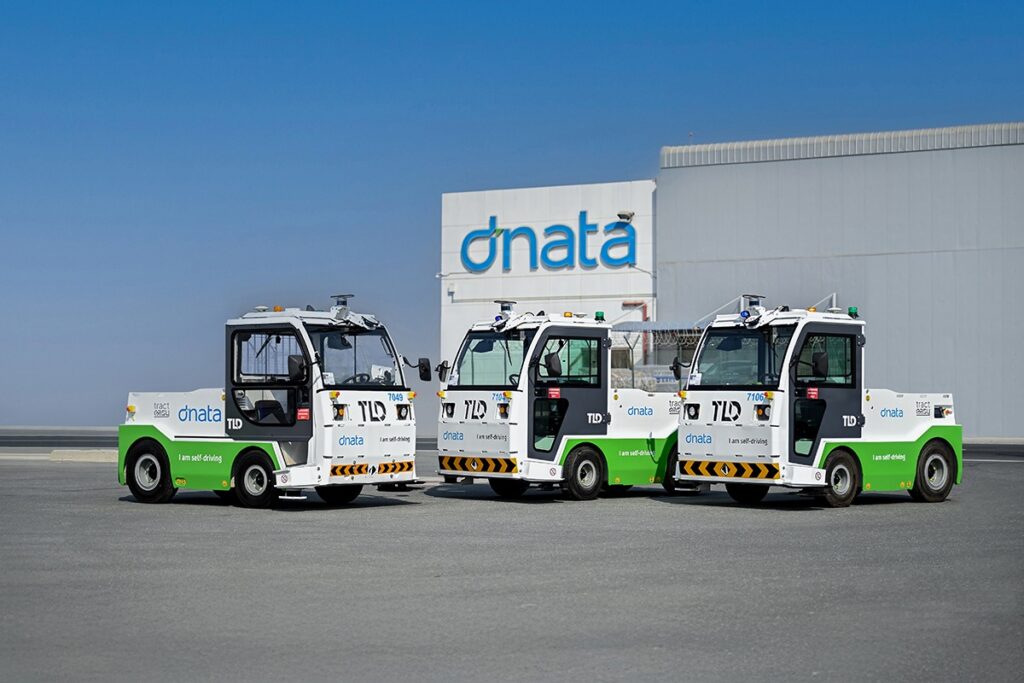Passengers flying out of Dubai World Central – Al Maktoum International Airport (DWC) may soon notice a futuristic change on the runway. A fleet of driverless electric baggage tractors is now transporting luggage directly to aircraft, marking a significant step in airport automation. This deployment is led by dnata, a major air and travel services provider.
About the Vehicles and Their Capabilities
The fleet consists of six EZTow electric tractors developed by TractEasy. These vehicles can tow up to four baggage containers (ULDs) at once and operate at speeds of up to 15 km/h. They follow fixed routes across the airport, ensuring timely and accurate baggage delivery.
Replacing Manual Tasks with Smart Automation
Traditionally, baggage transport between terminals and aircraft has relied on human drivers working under time pressure. With autonomous vehicles now in place, dnata says those staff members will be reassigned to more complex, higher-value tasks. The shift is expected to improve turnaround time and reduce human error, thereby making airside operations safer and more efficient.

Phased Rollout of Advanced Autonomy
The Dh6 million ($1.6 million) initiative begins with Level 3 autonomy, allowing limited human oversight. By early 2026, the project will be upgraded to Level 4, meaning full autonomy within a controlled airport environment. This will mark one of the most advanced autonomous implementations in airport operations globally.
Collaborative Effort for Regulatory Readiness
This initiative was developed over a year in collaboration with TractEasy, Dubai Airports, and the UAE General Civil Aviation Authority (GCAA). Together, the organizations created a regulatory framework tailored for autonomous vehicles operating in airside environments.
Testing for Scalable Expansion
Authorities consider the rollout a pilot phase to evaluate various operating models for future autonomous ground handling. The insights gathered will help shape larger-scale implementation plans, especially as DWC evolves into the world’s largest airport, designed to handle up to 260 million passengers and 12 million tonnes of cargo annually.
Global Context and Future Outlook
Jaffar Dawood, Divisional Senior Vice President of UAE Airport Operations at dnata, emphasized that the move takes autonomous technology beyond limited trials into full operational use. With global air travel rebounding and airport workloads increasing, dnata sees automation as essential for creating more resilient and efficient infrastructure.
According to the International Air Transport Association (IATA), similar trials of autonomous ground support equipment (GSE) are currently underway in over 15 countries.
